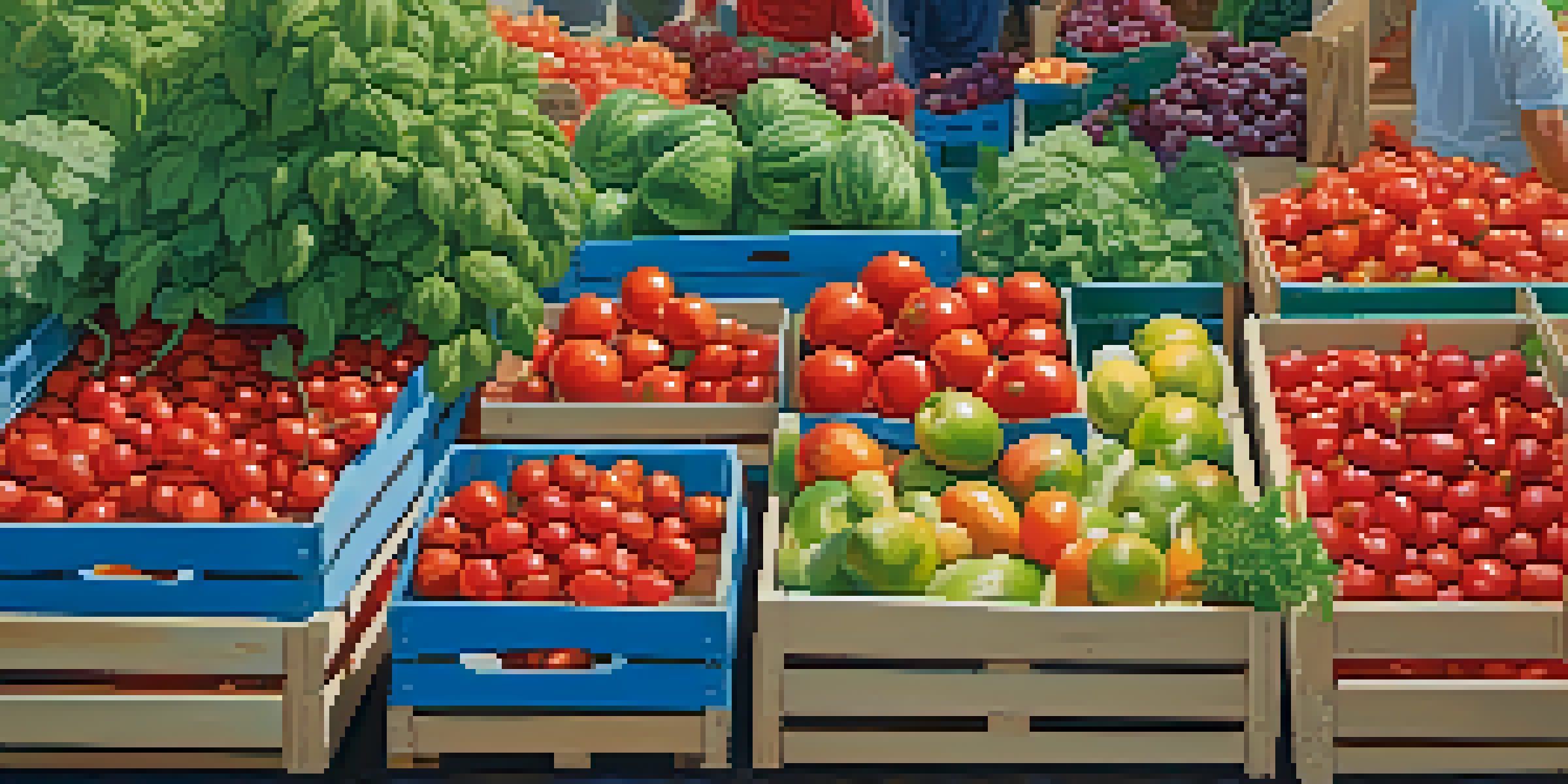The Role of Seasonal Eating in Raw Food Sustainability Practices

Understanding Seasonal Eating and Its Benefits
Seasonal eating refers to consuming foods that are in season within your local area. This practice not only supports local farmers but also ensures that you’re eating fruits and vegetables at their peak flavor and nutritional value. By aligning your diet with the natural growing cycles, you can enjoy a diverse range of flavors throughout the year.
Eating seasonally means eating what the Earth provides naturally, ensuring that our bodies receive the maximum nutrition from the freshest ingredients.
Eating seasonally can also lead to a more varied diet, which is essential for obtaining a wide range of nutrients. For example, in the summer, you might indulge in juicy tomatoes and fresh berries, while winter could bring hearty root vegetables and citrus fruits. This variety keeps meals exciting and encourages exploration of new recipes.
Moreover, seasonal eating can help reduce the carbon footprint associated with food transportation. When you choose local, in-season produce, you're not only supporting sustainability but also contributing to the health of your community.
The Connection Between Raw Foods and Seasonal Eating
Raw food diets often emphasize fresh, unprocessed ingredients, making seasonal eating a natural fit. By selecting seasonal produce, raw food enthusiasts can take advantage of the freshest ingredients, which are crucial for creating vibrant and nourishing meals. This connection provides a depth of flavor and texture that enhances the overall dining experience.

Additionally, seasonal produce is often more affordable, as it doesn't require costly transportation or storage processes. This means that those on a raw food diet can enjoy a budget-friendly approach to healthy eating, making it accessible for more individuals.
Seasonal Eating Supports Local Farmers
By choosing seasonal foods, you help local farmers thrive while enjoying produce at its peak flavor and nutritional value.
Incorporating seasonal ingredients into raw food recipes not only supports sustainability but also encourages creativity in the kitchen. Imagine tossing fresh, ripe strawberries into a salad or blending a seasonal squash into a creamy soup—these simple changes can elevate your meals.
Sustainability Practices in Raw Food Preparation
Sustainable raw food practices extend beyond just choosing seasonal ingredients. They also include mindful preparation methods that minimize waste and maximize the use of whole foods. For instance, using vegetable scraps for broths or composting leftover peels can significantly reduce kitchen waste.
The act of eating seasonal food is not just about taste and nutrition; it’s about connecting with the earth and supporting local communities.
Another aspect of sustainability in raw food preparation is the use of organic and non-GMO ingredients. By opting for organic produce, you’re supporting farming practices that are safer for the environment and your health. This commitment to quality aligns perfectly with the principles of raw food diets.
Moreover, embracing local food systems by participating in community-supported agriculture (CSA) can foster a greater connection to your food. This approach not only supports local farmers but also encourages a sense of community as you share in the harvest and learn about seasonal cycles.
The Environmental Benefits of Seasonal Eating
Choosing seasonal foods can lead to significant environmental benefits. When food is grown and consumed locally, it reduces the need for long-distance transportation, which is a major contributor to greenhouse gas emissions. By eating what’s in season, you’re playing a part in minimizing your carbon footprint.
Additionally, seasonal eating encourages biodiversity. When consumers prioritize local, seasonal produce, they help sustain diverse agricultural practices and protect against monoculture farming, which can deplete the soil and harm local ecosystems.
Environmental Benefits of Local Foods
Eating locally reduces transportation emissions and promotes biodiversity, making a positive impact on the environment.
In essence, by embracing seasonal eating within a raw food diet, you’re not just nourishing yourself; you’re also making an impactful choice for the planet. Each meal becomes an opportunity to contribute to a healthier environment.
Challenges of Seasonal Eating and Raw Diets
While seasonal eating offers numerous benefits, it can also present challenges, especially for those adhering to a raw food diet. Availability of certain ingredients may fluctuate with the seasons, which can limit meal options. For instance, if you’re craving a specific fruit that’s out of season, it might lead to frustration or compromise in your meal planning.
Another challenge is the lack of familiarity with certain seasonal produce. For those new to seasonal eating, it can be daunting to explore unfamiliar fruits and vegetables. However, this challenge can be turned into an exciting culinary adventure, encouraging you to experiment with new flavors and recipes.
Lastly, accessibility can be an issue in some regions. Not everyone has easy access to local markets or organic farms, which may limit the ability to fully embrace seasonal eating. In such cases, finding ways to connect with local farmers or community gardens can help bridge this gap.
Tips for Embracing Seasonal Eating
To fully embrace seasonal eating, start by familiarizing yourself with what’s in season in your region. Many online resources and apps can help you track seasonal produce, making it easier to plan your meals accordingly. This awareness can spark excitement as you look forward to the changing flavors throughout the year.
Another tip is to keep your meals simple. Focus on preparing dishes that highlight the natural flavors of seasonal ingredients. A fresh salad with a variety of seasonal vegetables or a smoothie using ripe fruits can be both satisfying and nourishing.
Challenges of Seasonal Eating
Seasonal eating can pose challenges like ingredient availability and unfamiliarity, but these can lead to exciting culinary adventures.
Lastly, don’t hesitate to get involved in your local food community. Visiting farmers' markets, joining a CSA, or participating in local food events can deepen your appreciation for seasonal eating, while also building relationships with local growers.
Conclusion: The Future of Sustainable Eating
Embracing seasonal eating within raw food practices is not just a trend; it's a pathway to a more sustainable future. As consumers become more aware of the environmental impact of their food choices, the demand for local and seasonal produce continues to grow. This shift not only benefits individual health but also supports the health of the planet.
By prioritizing seasonal ingredients, raw food enthusiasts can contribute to sustainable agricultural practices and promote biodiversity. Each meal becomes an act of care—not just for our bodies, but for the environment we inhabit.

In conclusion, seasonal eating is a holistic approach that harmonizes with raw food sustainability practices, paving the way for healthier diets and a healthier planet. So, let’s celebrate the seasons and the rich bounty they offer!